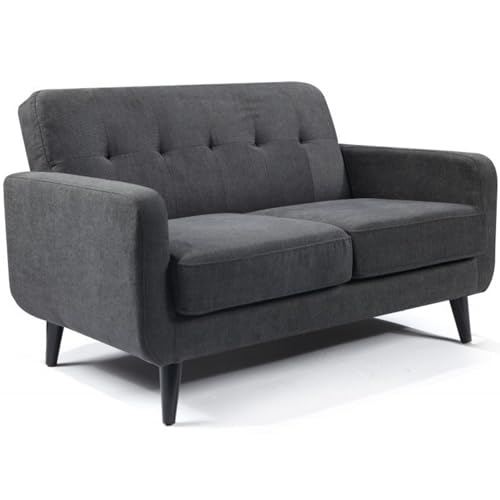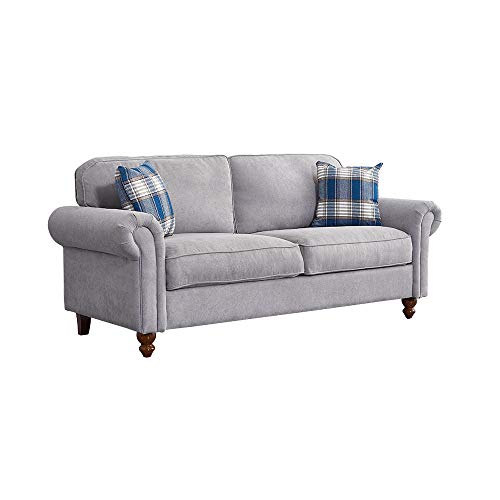Guide To 2 Seater Leather And Fabric Sofa: The Intermediate Guide Towa…
페이지 정보
작성자 Ramon 작성일24-12-05 17:44 조회89회 댓글0건관련링크
본문
 Choosing Between a 2 seater fabric sofa uk 2 seater leather and fabric sofa leather And fabric sofa (xypid.win)
Choosing Between a 2 seater fabric sofa uk 2 seater leather and fabric sofa leather And fabric sofa (xypid.win)If you're looking for a new sofa, it is difficult to decide between fabric or leather. This is particularly the case if you're not a professional with experience with furniture.
If you have kids or live in apartments, the leather option may be the best choice for you. It is easy to clean and looks great in most homes.
Comfort
A sofa is the main focal feature of many people's living areas and is a major purchase. You want one that you can sit for hours and looks good, is in line with your room style and can endure the test of time. It isn't easy to decide between leather and fabric, however, you must take into consideration your budget, lifestyle, and priorities before making a choice.
Leather is a premium, luxurious material that exudes elegance and luxury in any home. It is tough, stain-resistant, resistant to pets and children, and can last for a long time if properly cared for. It can be costly in the beginning and may require regular conditioning to avoid cracking or peeling.
2 seater fabric sofa sale sofas come in a variety of styles, colors and fabrics. They can be cheaper than leather sofas. They are also more comfortable and more cosy, and can be "broken in" right from the beginning. They are susceptible to dust mites and pet hairs and may require frequent cleaning. However, with new technology and performance fabrics there are now hypoallergenic options to choose from.
The longevity of a sofa made of fabric will depend on the quality of the material However, the majority of fabrics will last for 15 years if properly maintained. Regular vacuuming and deep-cleaning will aid in keeping the fabric clean and free of odours and stains. Like leather, they are susceptible to flattening and sagging over time. Additionally, many fabrics are treated with chemicals to make them stain-resistant and flame retardant. These chemicals can release volatile organic compounds that may alter the quality of air in the indoor environment and cause allergies.
Durability
We typically choose sofas with fabrics that are very durable, particularly if you have children or pets. It's not necessary to invest an enormous amount of money up front when you're likely to regret it after the first stain or claw. You don't want to buy something cheap that isn't durable enough for everyday use.
Leather, meanwhile, is extremely resilient and has an incredible strength for tears. It can last up to four times longer than fabric and it is naturally resistant to cracking, fading and flaking over time. It is also able to be conditioned to replenish its natural oils and look as good as new.
Fabrics are more affordable and come in many different colors, patterns and textures that can be adapted to any design scheme. They are also less difficult to clean than leather and can withstand a significant amount of wear and tear, however, they can be more prone to moisture and may fade in time.
Microfiber is a good option for its durability and can be found in a wide variety of colours, but it's not as durable as genuine leather and may not be able to take the punishment of scratches. However, it's an ideal choice for families because of its resistance to spills and stains, and it is easy to clean generally with a damp cloth.
Suede On the other hand is a struggle to clean and may be even more difficult to repair than leather. It also can lose its shape if not regularly maintained and can feel very rough to the roughness of the. It is also a thin product and therefore may not be as tough as sheepskin or cowhide.
Allergens
The fabric the sofa is constructed of can have a significant impact on your allergies, so it's important to understand the different ways to treat. Fabrics tend to store allergens like dust mites pet dander and mold that can trigger symptoms of allergies like rhinitis, hay fever, asthma and eczema. This is due to the fact that these fabrics create the perfect environment in which they can thrive.
The leather, however is not a source of the allergens and provides a consistent level of comfort, regardless of the season. It can also cause allergic dermatitis in those with contact dermatitis or are allergic to chemicals used in tanning. To avoid the risk of skin reactions, it's essential to use products that are vegetable-tanned and maintain a vigilant routine for your skin.
Both leather and fabric sofas are sturdy, but the material you select will have a significant effect on how well your couch holds up to wear. A high-quality material will resist fade or sagging and will be able to withstand spills or body oils as well as daily use. Many modern couches come with stain-resistant treatments to make cleaning easier.
While you might not be able to stop an allergic reaction from the leather on your sofa, it is possible to reduce allergens by having a lint roller near and regularly cleaning your living space. This can help reduce the amount of dirt, pet hair and dust mites that accumulate on your sofa. If you're still experiencing issues with allergies, consider replacing your sofa with a allergy-friendly model. For example, a leather sofa made from vinyl or synthetic leather is less likely to collect dust mites and pet dander, and will help you breathe easier.
Scratches
It is important to consider how much wear you can anticipate the leather sofa to endure. The amount of time a sofa is expected to last depends on the finish, colour and the quality of the leather. You also want to make sure that it is durable enough to withstand spills and other messes. You can do this by searching for a sofa with a sturdy wooden frame and high-density foam cushions.
Leather can be scratched for many reasons, including stretching, marking territory or the reliving of stress. Scratches can be of various severity. They vary from minor surface scratches, to deep cuts or punctures. Small scratches can be repaired by using a conditioner for leather. This will restore the equilibrium between moisture and oil within the leather and prevent it from drying out or cracking. The extent of damage will determine the type of treatment required.
If you have cats, it's recommended to trim their nails regularly as this can assist in stopping scratching on your couch. You can also redirect your cat's scratching habit by offering alternative scratching surfaces, such as cardboard or sisal rope. Another option is using a pet-safe furniture polish, which can be applied using an abrasive cloth on the affected area.
It is essential to clean your leather couch frequently and keep it away from direct sunlight and heat, as they can dry it out. This could cause the leather to crack. Repairing this is usually difficult and requires an overhaul. It is recommended to use a conditioner for leather to keep the leather soft.
Smell
A leather couch tends to have a slightly different smell than fabric. It's because leather is porous and will absorb odors like smoke, body odors, or food. The good thing is that the smells will usually disappear after a while, especially when you use a non-toxic, fragrance-free cleaner.
However, if the odor is strong, it could indicate that there's something wrong with the foam. This is usually caused by chemical off-gassing from petroleum-based polyurethane. If this is a problem you should look for couches manufactured with CertiPUR US certified natural latex.
Another way to identify fake leather is to feel for bumps or texture on the back of the sofa. This is a telltale sign that it's bonded, not genuine top grain leather. It is also possible to conduct an inspection of the interior by tilting the couch to its side to check if you see any visible upholstery backing. If it is, it's probably an artificial material such as polyurethane or polyester, which has a distinct scent than genuine leather.
 Regularly cleaning your leather sofa will help to keep it looking and smelling great. This will keep it looking great and fresh and will also stop it from becoming brittle or cracked over time. Begin by vacuuming, dusting and wiping the couch with baking soda (a natural method of eliminating smells). You should do this at least every two weeks or more in order to get rid of dust and dirt accumulation. Apply leather conditioner to maintain the appearance and color of your sofa.
Regularly cleaning your leather sofa will help to keep it looking and smelling great. This will keep it looking great and fresh and will also stop it from becoming brittle or cracked over time. Begin by vacuuming, dusting and wiping the couch with baking soda (a natural method of eliminating smells). You should do this at least every two weeks or more in order to get rid of dust and dirt accumulation. Apply leather conditioner to maintain the appearance and color of your sofa.댓글목록
등록된 댓글이 없습니다.
